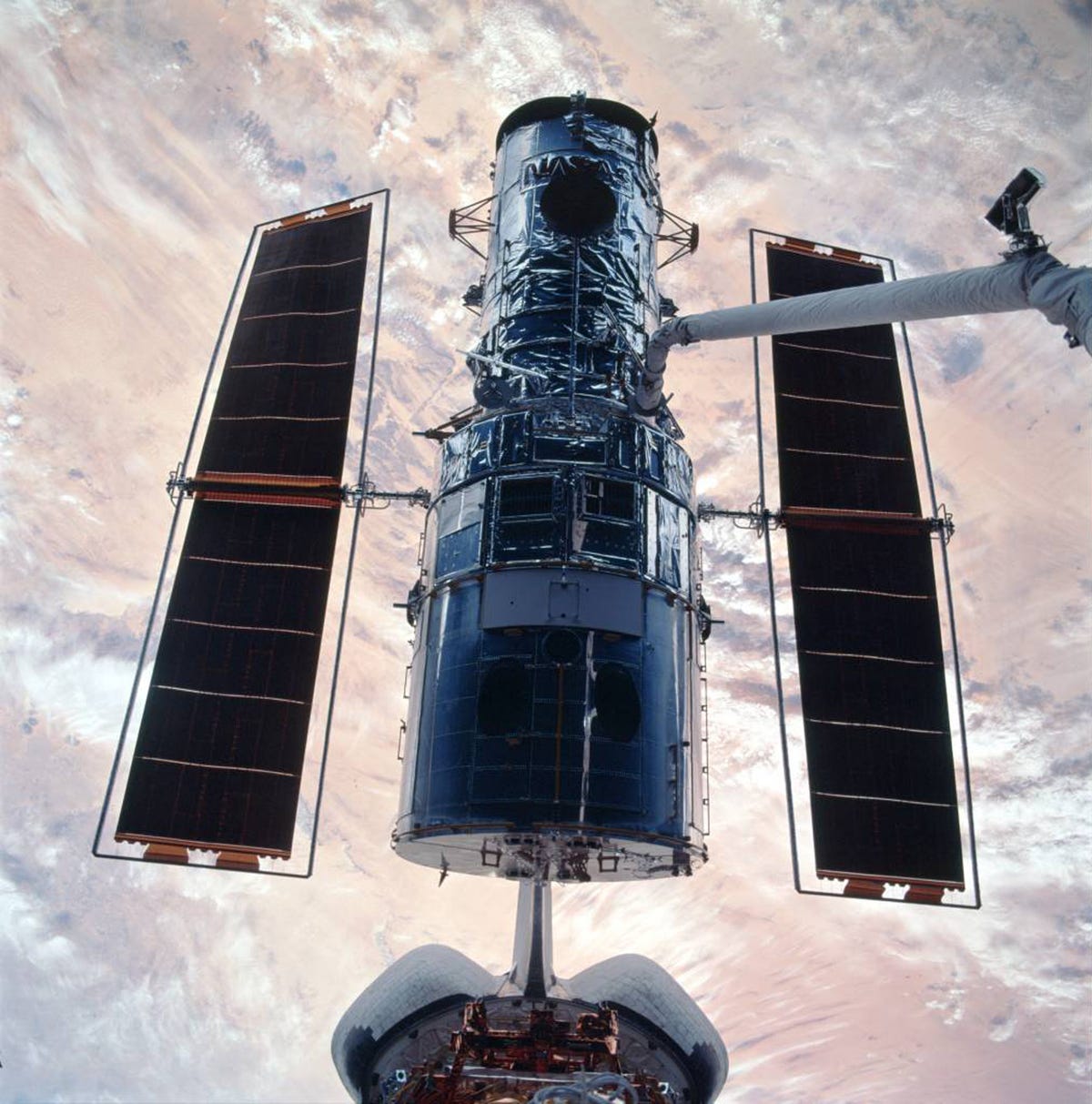17 amazing robots that are in space right now (pictures)
Humans have catapulted myriad machines beyond our atmosphere, but only some qualify as true spacebots. Here's what's out there right now.

Hubble Space Telescope
According to the Jet Propulsion lab, space missions generally fall under two categories: manned or robotic. But some space machines are smarter than others.
Hubble Space Telescope is an observational tool but according to JPL, also a robot.
Its accomplishments? Oh, you know, just discovering a new moon off of Neptune. Measuring the rate of the universe's expansion. Documenting the birthplace of new stars. Nothing much.
Dextre
This maintenance bot is sort of the International Space Station version of Disney's Burn-E. The space station’s robotic handyman has two arms that can replace observation equipment or change batteries.
Cassini
Likened to a "big golden turkey" by Jet Propulsion Lab devotees, Cassini eyeballed Jupiter for us for six months before moving on to its destination, Saturn, in 2004. Now in its second major mission, Cassini is making the first observations of a complete seasonal period for the sixth planet.
Robonaut 2
Get this: A legless robot that lives on the International Space Station, has a camera on its head, and doesn’t need constant supervision. Nope, not creepy at all. Robonaut 2, which was launched up to the ISS in 2011, had performed experiments in a stationary position inside the craft, until...
Robonaut 2: I can fly!
…it got its legs delivered in 2014!
Rosetta
Hailing from Europe, Rosetta is the first spacebot to orbit, then land on a comet. Rosetta’s mission: to complete the most detailed study of a comet ever. Its solar-powered lander, Philae, appears to have lost its ability to communicate, but scientists hope the lander can be revived by August 2015.
Dawn
It might look like a giant space dragonfly, but its robotic capabilities are impressive, thanks to its four spectrometers and an ion-propulsion system that enables it to orbit two extraterrestrial destinations. Currently operating in the asteroid belt between Mars and Jupiter, Dawn was the first spacecraft to orbit a dwarf planet. It is credited with discovering the source of many of our meteorites: the giant asteroid Vesta.
Mars Express
How's this for a multitasker? An exploration craft that climbed into space aboard a Russian rocket; boosted itself into Martian orbit; discovered underground ice deposits; detected methane in the Martian atmosphere from orbit; and studied the Red Planet's crust in detail. So, what are you doing with your day?
Curiosity
As you read this, the Curiosity robotic rover is rolling over the Martian landscape and carrying out our orders to analyze Martian rock samples. The bot is looking for anything that might help mankind colonize the planet.
Opportunity
Opportunity rover's robotic arm includes two spectrometers, a microscopic imager, particle-collection magnets, and a tool that scrapes up promising material. It’s currently on Mars, exploring a crater so we don’t have to.
2001 Mars Odyssey
Nope, not a movie title. This robotic spacecraft is orbiting the Red Planet. Its mission: look for signs of water and ice, and analyze the planet's geography. It also acts as a go-between when Curiosity needs to have a word with Earth.
Advanced Composition Explorer (ACE)
How can we explore the sun without getting a third-degree burn? With the ACE bot. Its programming allows it to monitor the solar winds, and warn us if any space satellites are running the risk of radiation damage.
Hayabusa 2
How's this for a Japanese robotic space mission? Land on an asteroid. Deploy a camera and a little bomb. Send the camera a short distance away from the little bomb. Set off the little bomb while the camera watches. Then explore the crater left by the bomb. When it comes to robot-themed ambition, the Japanese don't do small.
Juno
Launched in 2011, the high goddess of NASA's solar system mission is slated to reach Jupiter in July 2016. She's programmed to execute space maneuvers millions of miles away from Earth, and she's outfitted with nine scientific instruments. But the craft is already hard at work as it travels to its destination.
Voyager 1
According to the Jet Propulsion Lab, Voyager 1 counts as a space robot because it receives routine commands and executes them. It's currently the farthest spacecraft from Earth, and is credited as the first spacebot to enter interstellar space, in 2012.
Mars Orbiter Mission
Your MOM's totally in space right now. India's first interplanetary effort, the Mars Orbiter Mission, is also the first Asian spacebot to reach the Red Planet's orbit. India had planned four trajectory correction maneuvers to keep the bot on track, but its moves were so perfect that engineers canceled the fourth operation.
New Horizons
Fine, fine, it isn't a planet, but that isn't stopping Pluto from getting a little love from New Horizons, a spacebot whose mission is studying the planet-like...thing...up close. After traveling about 3 billion miles, New Horizons will have to thread a celestial needle and fly through a circle only about 186 miles wide to accomplish its mission.